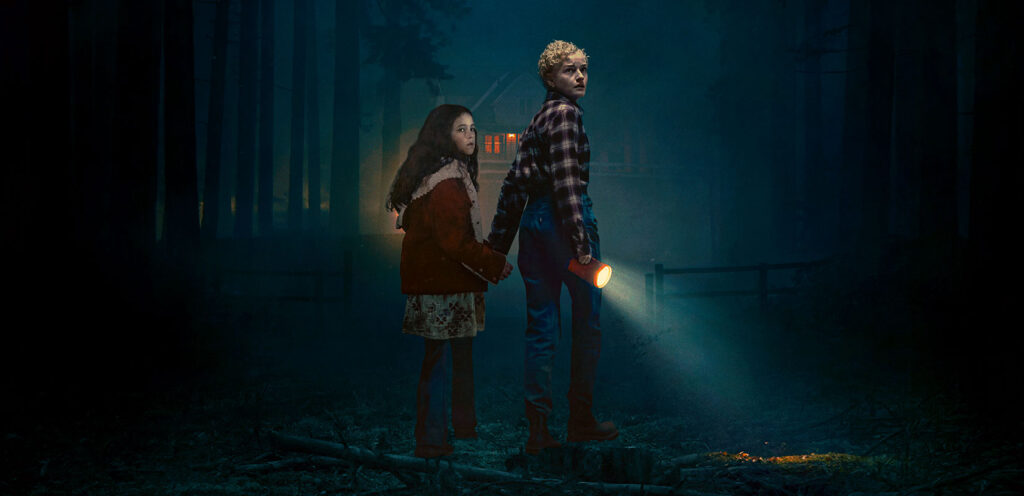Since its first howl in 1941, The Wolf Man has become a cornerstone of Universal’s classic monster lineup. It captures imaginations with its tragic narrative of a man cursed by a primal force beyond his control. Blumhouse Productions has recently breathed new life into these icons with modern-day retellings of Halloween, The Exorcist, and Leigh Whannell’s stunning The Invisible Man. Now, Whannell returns to Universal’s unholy pantheon of monsters with Wolf Man. While it succeeds in many ways, it struggles to capture the bone-deep fear that made The Invisible Man so haunting.
Wolf Man follows Blake (Christopher Abbott), a loving husband and father, who inherits his childhood home in rural Oregon after his father mysteriously vanishes. With his marriage to Charlotte (Julia Garner) on the brink of collapse, Blake persuades her to take a break from city life and visit his childhood home with their young daughter, Ginger (Matilda Firth). However, after being attacked by an unseen animal as they approach the farmhouse, the family barricades themselves inside, only to discover the terror is not limited to the prowling creature outside. As Blake begins exhibiting strange, unrecognizable behavior, Charlotte must decide whether the more significant threat lies beyond the walls—or within their family.
Whannell’s direction shines in its ability to weave a poignant family drama with horror. The film’s strongest asset is the familial dynamic between Blake, Charlotte, and Ginger; each delivers intimate and honest performances. Abbott is particularly gripping as Blake. His slow descent into a feral animal is more than just a physical transformation; it’s also a look at loss, guilt, and the fragility of identity. Watching his demeanor give way to animalistic behavior is both tragic and gut-wrenching.
While it doesn’t reach The Invisible Man‘s spine-chilling and technical heights, Wolf Man carves out its own space with its tragic character arcs, stellar performances, and breathtaking audiovisuals.
Another standout is the sound design, which amplifies the film’s sense of dread and fear of the unknown. Whispers of wind, distant howls, and heavy footsteps around the farmhouse create a constant feeling of unease. The cinematography, too, deserves praise. It captures the natural splendor of Oregon while juxtaposing it with darkness and isolation.
However, Wolf Man is not without its flaws. The design of the titular creature, while aligned with the film’s grounded and realistic take, leaves much to be desired. The Wolf Man’s appearance feels functional rather than fearsome, undercutting the visceral terror the story aims to evoke. This is especially glaring compared to Whannell’s The Invisible Man, which masterfully used the unseen as a source of dread. There’s something inherently more terrifying about being stalked by an invisible force, where the unknown plays tricks on the mind, than being chased by a physical creature. Here, the fear feels more external, less psychological, and ultimately less potent.
Overall, despite its shortcomings, Wolf Man is a worthy addition to the Universal monster canon, offering a fresh perspective on a classic tale. While it doesn’t reach The Invisible Man‘s spine-chilling and technical heights, it carves out its own space with its tragic character arcs, stellar performances, and breathtaking audiovisuals. Although Whannell may not deliver a perfect werewolf film, he gives us a profoundly human story of family, fear, and the primal instincts we all wrestle with.
Rating: 4/5 atoms

Wolf Man hits theaters on January 17th.






